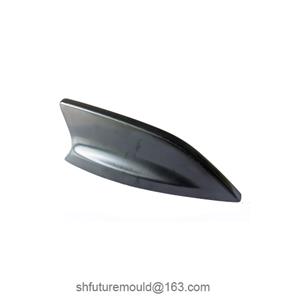How Are Sink Marks Formed on Injection Molded Products?
Sink marks are a common surface defect in injection-molded products, typically appearing as localized depressions or wavy patterns on the surface. Their formation is primarily related to material properties, mold design, and molding process parameters.
1. Material Shrinkage
Cooling Shrinkage
Plastics undergo volumetric shrinkage as they cool and solidify from a molten state. Areas with greater thickness cool more slowly, leading to surface depressions and sink marks.
Characteristics of Crystalline Plastics
Crystalline plastics like PP and POM have higher shrinkage rates compared to amorphous plastics such as PC and PMMA, making them more prone to sink marks.
2. Poor Mold Design
Uneven Wall Thickness
Inconsistent wall thickness results in uneven cooling rates. Thicker sections shrink more, causing sink marks.
Rib or Protrusion Design Issues
If ribs or protrusions are too thick or improperly proportioned relative to the main wall, these areas may not cool sufficiently, leading to sink marks.
Improper Gate Location or Size
Gates positioned too far from thick sections may lead to uneven material filling. As the material cools, sink marks are likely to form.
3. Suboptimal Molding Process Parameters
Insufficient Injection Pressure or Holding Time
Insufficient injection pressure or too short a holding time can result in incomplete cavity filling. As the material cools, inadequate pressure compensation leads to depressions.
Inadequate or Uneven Cooling Time
Insufficient cooling time or uneven cooling system distribution can cause slower cooling in certain areas, increasing the likelihood of sink marks.
Improper Mold Temperature Settings
Low mold temperatures may cause the surface to solidify quickly, while the interior remains uncured, resulting in surface depressions.
4. Material Selection and Processing Conditions
High Shrinkage Rate Materials
Materials with higher shrinkage rates, such as PP and PE, are more likely to form sink marks in thick sections.
Insufficient Filler Content
If materials lack sufficient fillers, such as glass fibers or mineral powders, their resistance to shrinkage decreases, making sink marks more likely.
The formation of sink marks is the result of multiple factors, commonly occurring in thick sections, rib areas, or near gates. By implementing appropriate mold design, optimizing process parameters, and selecting suitable materials, sink marks can be effectively reduced or prevented.
- Injection Mold
- Automotive Injection Mold
- Electronics & Electrical Injection Mold
- Consumer Goods Injection Mold
- Airplane Components Injection Mold
- Medical Components Injection Mold
- Irrigation Components Injection Mold
- Injection Molds




